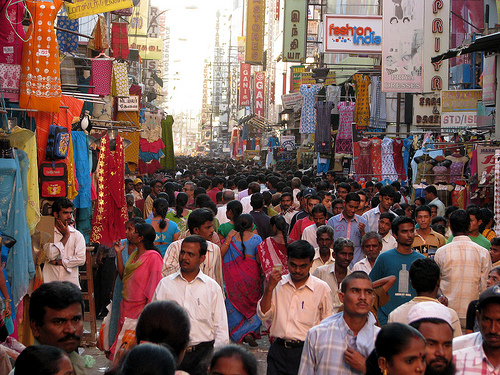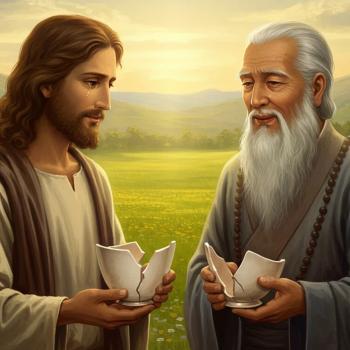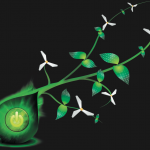
**Editor’s Note: The following is the first in a three-part series of articles written by Andrew Cohen during his recent trip to India. Presented in Q&A format, they include Cohen’s reflections on the significant spiritual and cultural changes that are occurring amidst India’s rapid modernization.
Question: How has India changed over the years since you first started visiting?
Answer: India seems more connected with the whole world today. When I first came to Mother India as an earnest spiritual seeker back in the 80s, there was a sense that one was entering into a colonial and even ancient world-space that was very far away from the West. That was part of the thrill of being here—feeling that you really were in the East. You had to work very, very hard to even make an international phone call.
Today, India is so much more integrated into our globalizing world. You still have the experience of being in the East, but you really never feel isolated from the rest of the planet. So many Indians have migrated to the West to pursue a better life. There seems to be an endless flow of bodies coming and going home from every corner of the globe, and especially from America. A surprising number of the people that I’ve met here have been to the West multiple times. As a result, in all the major cities in India today, the East-meets-West connection is very strong. So the main difference between now and thirty years ago is that India feels connected to the rest of the world in a dramatic way.
What has also changed is the general sense of being overcrowded. Traveling around India, it’s obvious that there are a lot more people than there used to be. The population is much larger than it was when I came to India for the first time in 1984. So the sense of India being, metaphorically, one big unending traffic jam, is part of one’s day-to-day experience here. This is true whether one is trying to get from point A to point B in the relentless bumper-to-bumper congestion of Bombay’s city streets, or way up at the foothills of the Himalayas in the pilgrimage town of Rishikesh, one of my favorite places.
Thirty years ago, one could go for a walk along the banks of the Ganges in Rishikesh and experience its mystical and magical calm—the fragrance of the transcendent was palpable. Today there are so many people on motorbikes that even there, in the “City of Sages,” the sense of too many people, too many cars, too many taxis, too many scooters, too much noise, and too much pollution is overwhelming.
Today in India there is also a tangible sense of tension and stress in the air almost everywhere, because the country is on the move. So many people are energetically seeking a higher standard of living and constantly competing with each other for what’s available. Being a spiritual teacher, what I find interesting is that India’s most popular Gurus are still teaching the profound perennial truths of the Vedas, the Upanishads, and the Bhagavad Gita. But whereas they used to be speaking about the possibility of Moksha and soul liberation and Enlightenment, now they seem to be speaking more about stress relief in an overstressed and overcrowded world.
The rarified technologies of Himalayan mystics now are taught to India’s multiplying masses as a means of finding much-needed relief from chronic and overwhelming emotional and existential tension. Some of her modern-day Gurus teach meditation or breathing exercises to literally hundreds of millions of people on TV channels devoted to propagating India’s ancient religious and spiritual culture. My fundamental sense is that people are quite overwhelmed by the speed of change, and not exactly sure how to face it or what to do about it.
Download a free chapter of Andrew Cohen’s book, Evolutionary Enlightenment, by clicking here.
Image: © mckaysavage @ flickr.com















